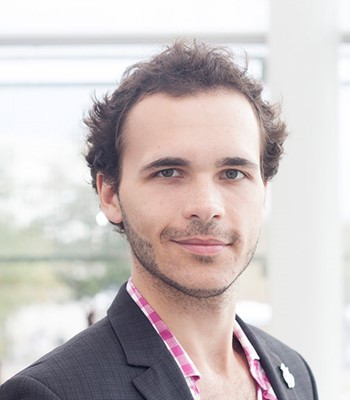



Immanuel graduated at Bath University with a MSc in Automotive Engineering in 2019, having previously studied Motorsport Engineering at Oxford Brookes University. He combined his studies at Bath with working at BMW Motorsport as a Performance and Chassis engineer as well as a component and design analyst. Due to his Motorsport background, both as a racing driver and engineer, combined with a strong personal interest in fuels and combustion engines, he chose to undertake a simulation project at Bath University dealing with engine performance of a high-performance combustion engine when converted to ethanol E85 and LPG Fuel. Furthermore, as part of his dissertation, he conducted a life cycle assessment of a dual-biofuel production plant, producing biodiesel and renewable methanol. As part of the AAPS CDT programme he aims to undertake research in sustainable combustion engine technologies.

This project investigates a pathway to making water injection for combustion engines mass market proof. Water injection for combustion engines has been implemented a number of times into limited production motor vehicles to enable higher engine performance, mainly with forced induction. In these cases, the technology was used to lift the knock limit by decreasing combustion temperatures. However, water injection enables better thermal efficiency with lower combustion temperatures which can decrease particulate, CO, CO2 and HC emissions together with fuel consumption. Nowadays, a large portion of engines utilise forced induction which at certain times requires extra cooling achieved by rich running conditions. Lowering combustion temperatures would remove this need. Furthermore, as mentioned, with lower combustion temperatures, engines could run higher compression ratios which would make engines smaller, hence reducing rotational masses and improving fuel consumption. These potential benefits reflect the current drive toward more efficient and cleaner combustion engines. Electrification is one of the pathways being implemented to fight global warming but also in future combustion engines are set to be part of the of drivetrains available. One of the reasons why water injection has not made its way into mass production vehicles is the need for the consumer to refill the water tank after relatively short intervals by purchasing distilled water. This is impractical and not acceptable for consumer satisfaction. This project aims to produce a solution where the water vapour in the exhaust gas is condensed to liquid form, cleaned and stored to then be injected back into the engine to result in a closed cycle. There are several issues that need to be addressed when proposing such a solution. Among those are water pH values, moulding, freezing and impurities within the condensed water. Depending on the progress of the research, a prototype of the whole system may be constructed with the possible side effect of the water injection that the currently imposed GPF filter for gasoline engines could be removed due to the reduction of particulate emissions. This would be a positive side effect since less aftertreatment would result in a weight and efficiency benefit.
© Copyright 2024 AAPS CDT, Centre for Doctoral Training in Advanced Automotive Propulsion Systems at the University of Bath